83 F. high temperature Wednesday in the Twin Cities.
84 F. average high on July 19.
87 F. maximum temperature on July 19, 2016.
July 20, 1951: A tornado hits Minneapolis and Richfield, killing five people.
July 20, 1909:
10.75 inches of rain falls in 24 hours at Beaulieu in Mahnomen County.
This record would stand for over 50 years. Bagley receives an estimated
10 inches.
A Tornado Like No Other: Remembering July 18, 1986I
can't believe it's been 31 years since KARE-11's news helicopter beamed
back live video of a tornado carving up Springbrook Nature Center, up
in Fridley. Standing in the TV studio I was just as dumbfounded as
viewers watching at home.
People tell me they can still remember
exactly where they were that day. Did seeing a live tornado during the 5
pm news make them more likely to head to the basement? Probably not.
The
video was riveting; footage of this nearly-stationary F-2 tornado has
been analyzed by atmospheric scientists around the world. It's a minor
miracle nobody was injured or killed that day, and it's a reminder that
close-in suburbs CAN see large, violent tornadoes.
After last
night's storms I'm happy to be tracking sunshine & upper-80s today;
no drama expected. More T-storms arrive on Friday, but a push of
Canadian air treats us to 70s by Sunday and Monday. Enjoy this temporary
relief.
Today's blog includes news of a 7-second lightning
strike, tales from lightning survivors, and the 2nd warmest year to
date. By the way It may feel like 110F in Washington D.C. by Saturday.
Ouch.
Behind the Scenes of the Brooklyn Park/Fridley (KARE-11) Tornado.
I can't believe it's been that long since pilot Max Messmer and the
late, great Tom Empey brought us live footage of a tornado ripping up
Springbrook Nature Center. It was a day like no other, at least for me. I
suspect my buddy Paul Magers will agree. Covering a tornado in the
close-in suburbs during a newscast, with a vantage point from the air?
It all seemed a bit surreal, and it still does. In some respects the
story fell into our laps. KARE-11's helicopter was on its way to another
story when Max saw a funnel forming over Brooklyn Park. Photographer
Tom Empey was testing out a new, revolutionary "gyro-zoom" lens, which
allowed him to take incredibly smooth, vibration-free close-ups of the
tornado in progress. We made it up as we went along. There was
(obviously) no script, no Teleprompter to fall back on. And in the heat
of the moment mistakes were made: the tornado did not produce 200 mph+
winds. For a time the tornado looked like a powerful wedge, but peak
winds were probably no stronger than 130-150 mph. Still strong enough to
rip mature trees out of the ground like weeds though.
Check out the video, courtesy of Tom Oszman at TCMediaNow.
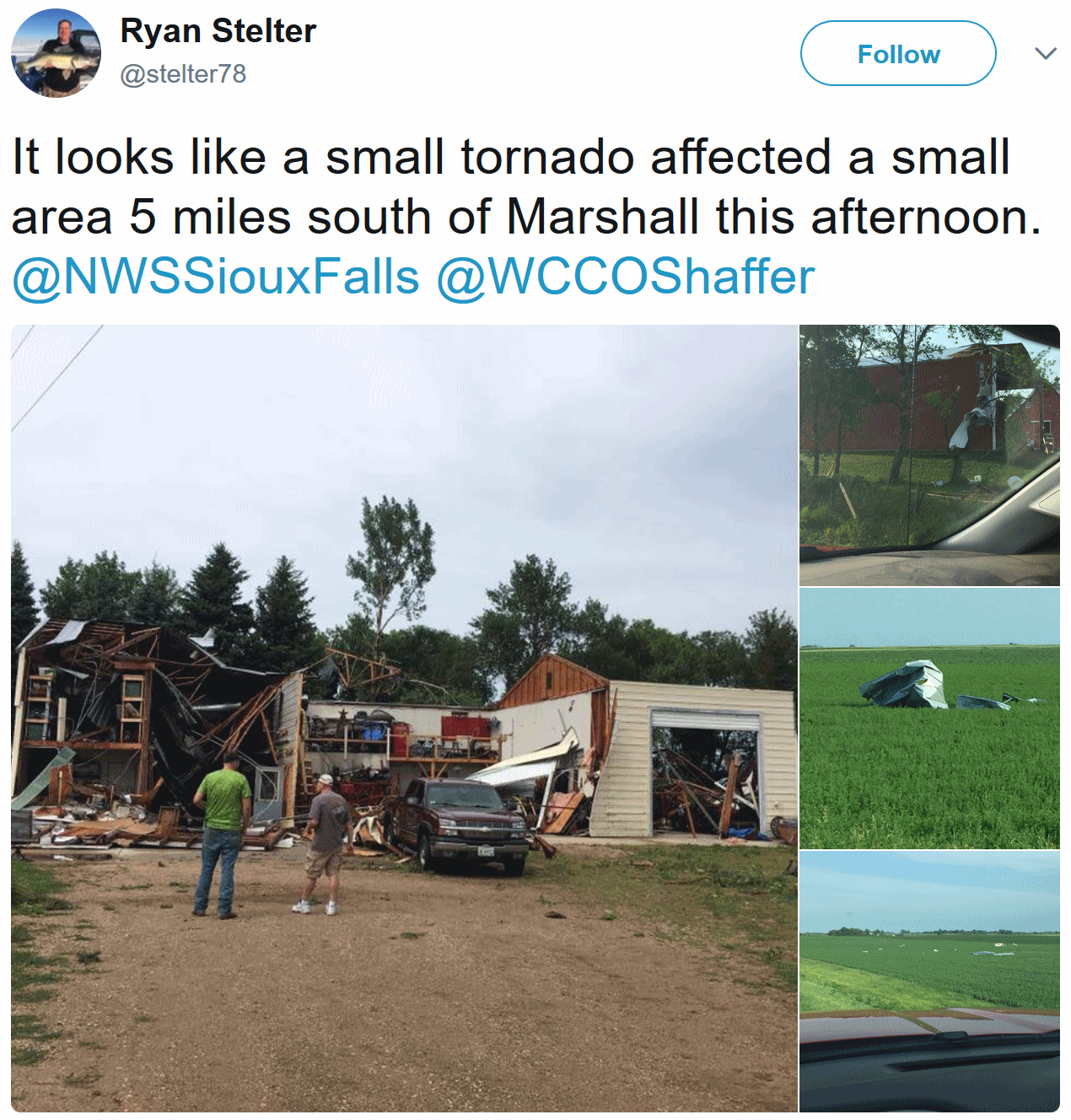
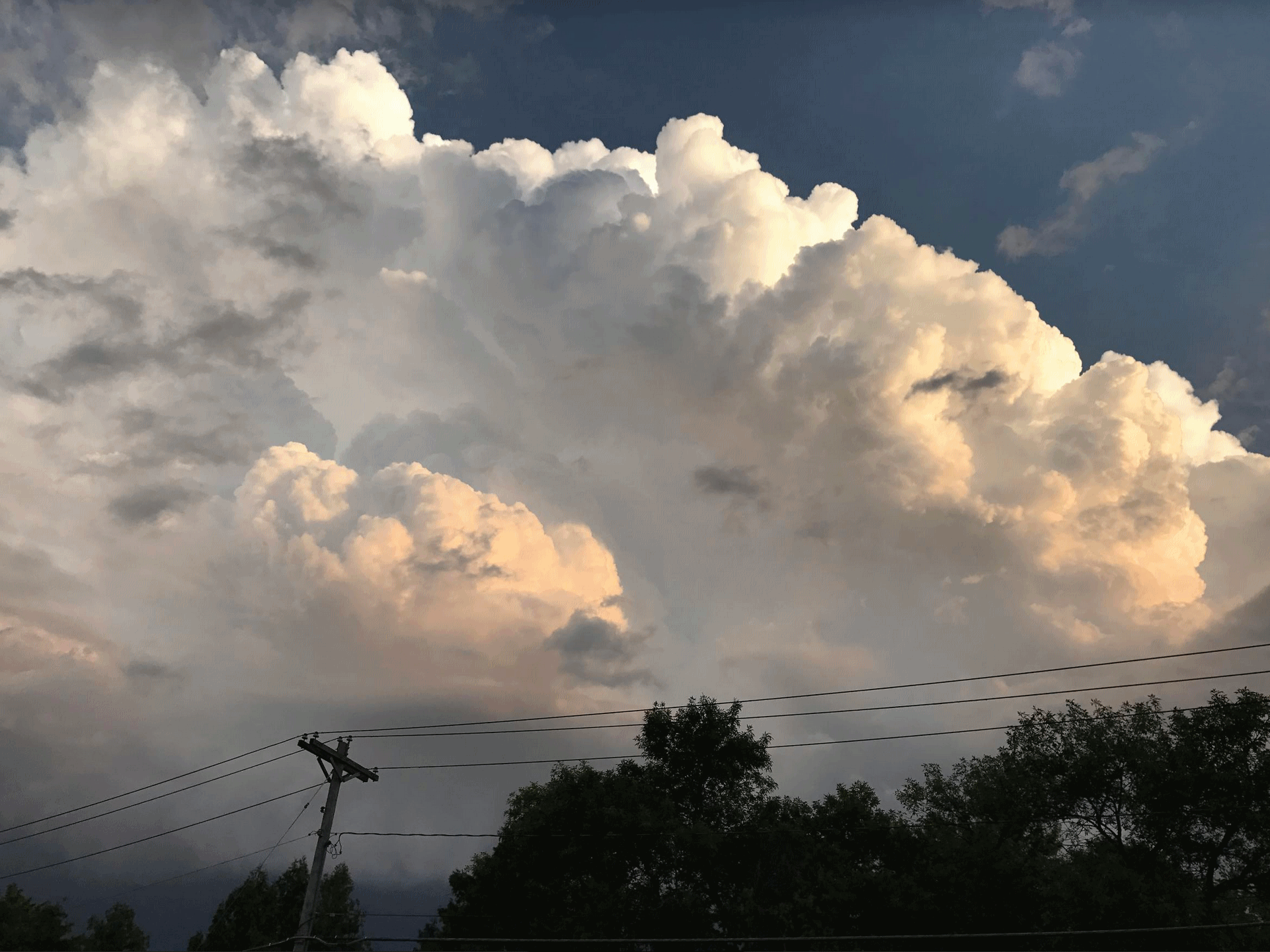 Towering Thunderheads
Towering Thunderheads.
I snapped this photo around 8:30 pm yesterday as a second line of
T-storms blossomed over the southern metro, packing torrential rain,
small hail and frequent lightning.
South Dakota Squall Line.
Here's a GOES-16 visible image (insert non-operational disclaimer here)
of the line of storms that sparked straight-line winds as high as 90
mph near Huron, South Dakota on Wednesday. Image source: NOAA and
AerisWeather.
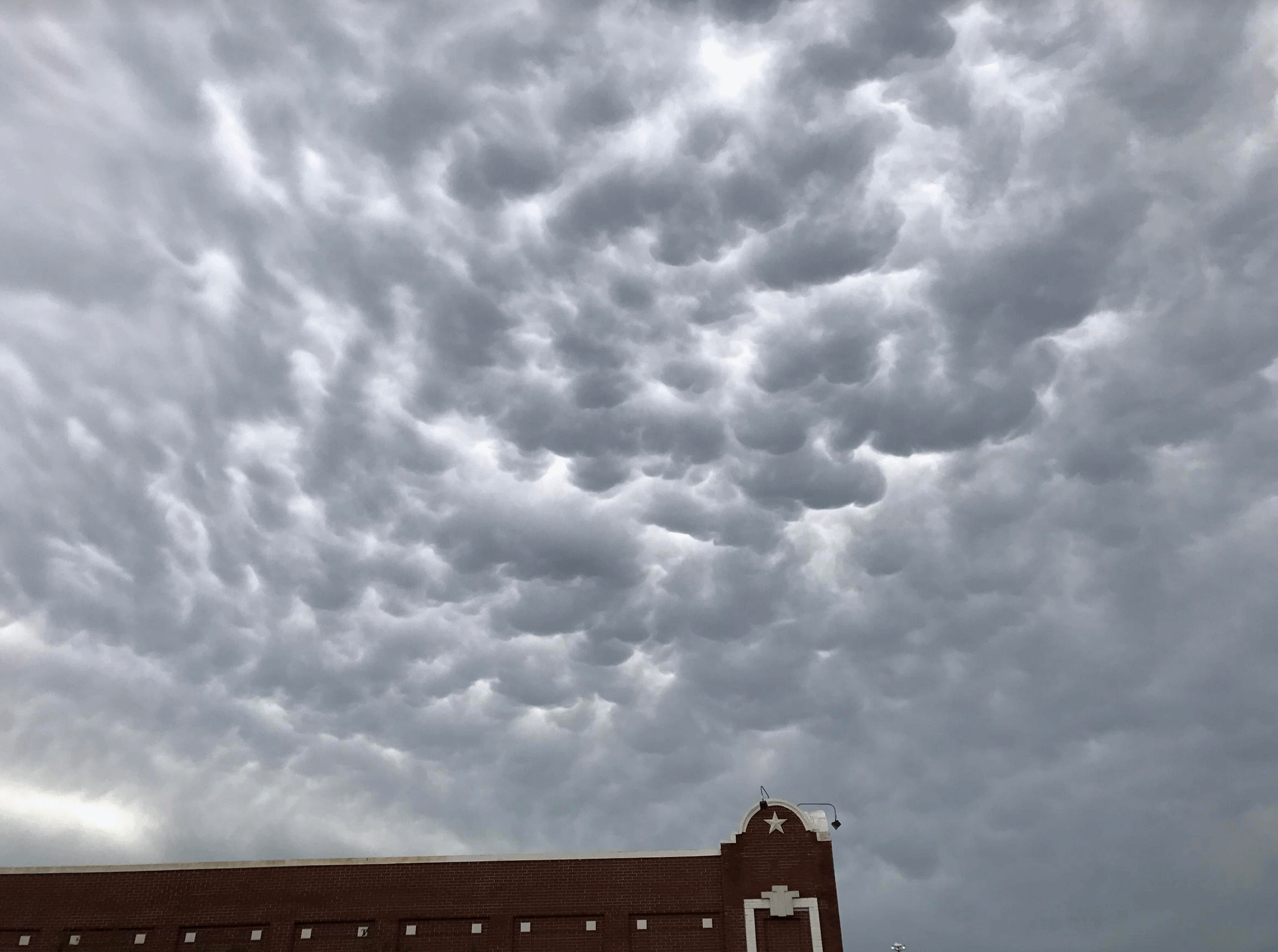 I Want My Mamma
I Want My Mamma.
It was an impressive display of cumulonimbus mammatus yesterday
afternoon, on the backside anvil of the severe storms that swept south
of the Twin Cities. They look like scoops of ice cream from below, but
you'd definitely want to keep your distance from these hail-cooled
downdrafts while flying.
Thursday Flash Flood Risk.
A nearly stationary frontal boundary sets the stage for training
T-storms over the Upper Midwest, the best chance of flash flooding from
Pierre and Sioux Valls to Redwood Falls. Monsoon storms bubble up again
over the southwestern USA, from Salt Lake City to Tucson and Santa Fe.
Praying for Cooling T-storm.
Heavy showers and T-storms push across the Great Lakes into New England
today, a few T-showers sprout across the Ohio Valley in response to
strong heating of the ground. Any storms will temporarily cool things
off 10-15F, but also increase humidity levels, making it a wash. Not
much rain in the forecast west of the Rockies, although rain may brush
Seattle and Vancouver by Friday night and Saturday. 84-hour NAM Future
Radar: NOAA and Tropicaltidbits.com.
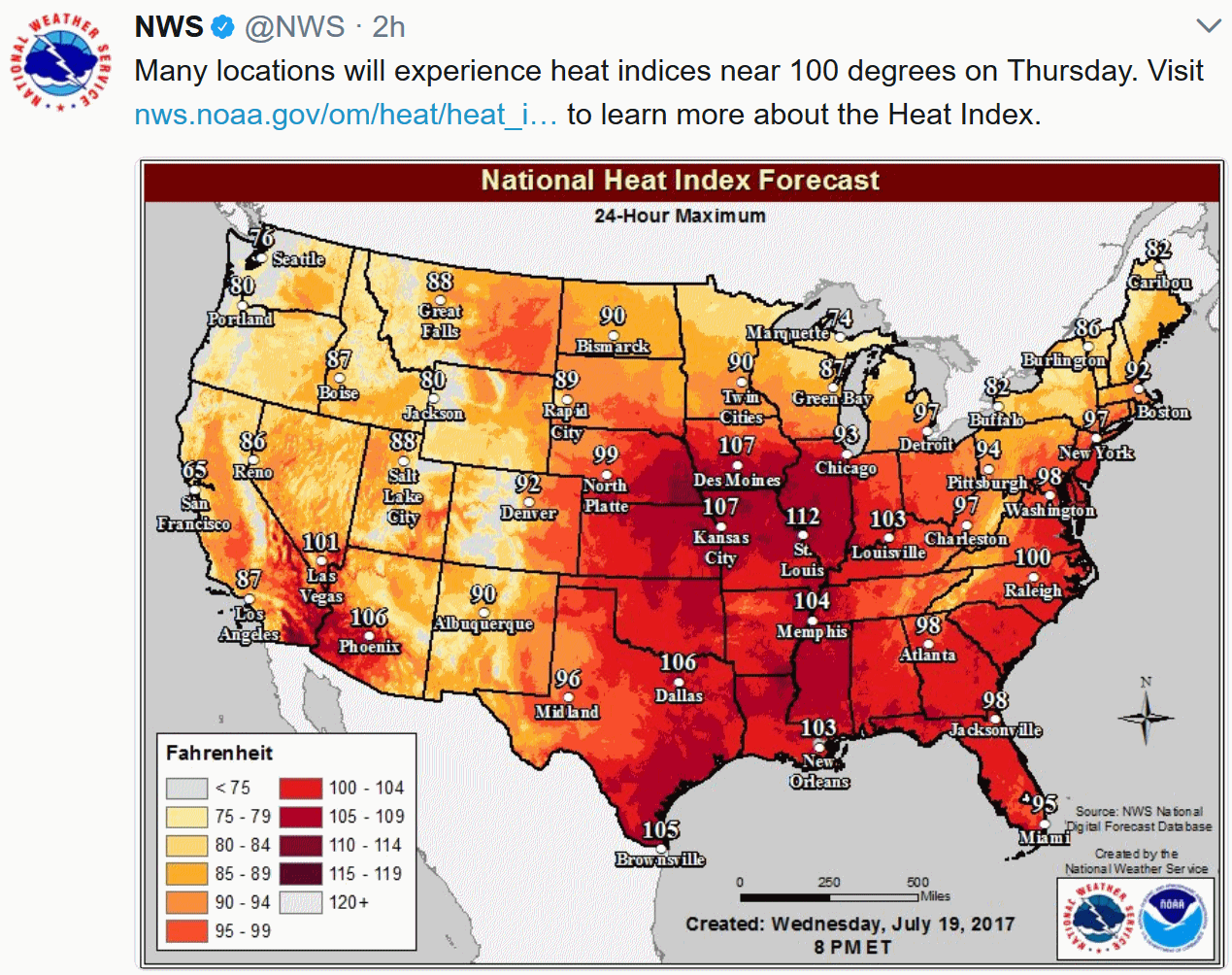
Dangerous Heat Index on Saturday.
A "feels-like temperature" as high as 110F from Kansas City and St.
Louis to Peoria and Indianapolis, Washington D.C. and Philadelphia? NOAA
models are hinting at a 115F heat index from Charlottesville to
Richmond and Norfolk by Saturday afternoon. You'll be hearing more about
the extreme heat from the Midwest to the Mid Atlantic and Carolinas
this weekend.
WetBulb Globe Temperature: More Accurate Than Heat Index? A
NOAA link
explains the difference between Heat Index and Wet Bulb Temperature,
which seems to be a better measure of what the combination of heat and
humidity (and direct sunlight) really feels like: "
The WetBulb Globe
Temperature (WBGT) is a measure of heat stress in direct sunlight,
which takes into account: temperature, humidity, wind speed, sun angle
and cloud cover (solar radiation). This differs from the heat index,
which takes into consideration temperature and humidity and is
calculated for shady areas. If you work or exercise in direct sunlight,
this is a good element to monitor. Military agencies, OSHA and many
nations use the WBGT as a guide to managing workload in direct sunlight..."
Temporary Relief.
Sticky weather lingers into Saturday, but a wind shift to the northwest
pulls cooler, drier air into Minnesota by Sunday, when dew points dip
into the 50s. Great sleeping weather! Enjoy a brief reprieve from the
muggies, because temperatures slowly warm again next week. Twin Cities
ECMWF data: WeatherBell.
An Expansive, Persistent Heat Wave.
Looking out 2 weeks (which is perilous) and the GFS shows a stubborn
heat-pump ridge of high pressure over the western half of the USA,
suggesting relentless heat from California and Oregon to the Plains and
Midwest; slight relief for New England. Looks like much of America will
see a real summer this year - for those of you who feel heat and
humidity-deprived.
Hit By Lightning: Tales from Survivors. Any desire you ever had to boat, golf or swim during a thunderstorm will be dashed after reading this story at
The New York Times; here's an excerpt: "...
Dr.
Mary Ann Cooper, a professor emerita at the University of Illinois at
Chicago, and an expert on lightning injuries, said lightning can cause a
wide range of damage, from tingling and numbness to cardiac arrest and
lasting brain injury. About two-thirds of people lose consciousness, she
said. Fewer than half suffer marks on their skin. And most are hurt by
electricity as the current travels through the ground. The Weather
Service estimates only 10 percent of those hit by lightning die. It's
not a club anyone wants to join, but survivors often crave one another's
company..."
Very Close Call with a Flash Flood.
This guy is very, very lucky. This is the same Arizona flash flood that
claimed 9 lives last weekend, all from the same family, an
incomprehensible tragedy. Here's an excerpt from
WJBD.com, including video from ABC's Good Morning America: "
An
eyewitness who captured video of the powerful flash flood that killed
nine people this weekend in Arizona questioned during the ordeal whether
he would even survive to talk about it. "You make the wrong step and
you get sucked under. You just pray you make the right decision,"
Brandon West of Chandler, Arizona, told ABC Phoenix affiliate KNXV-TV.
West, 36, a friend and his dog named Lucky were headed to the area for a
swim in the hot weather, KNXV-TV reported, when they encountered the
rolling tide of black water, thick with debris. West not only survived
but managed to record what he saw on video..."
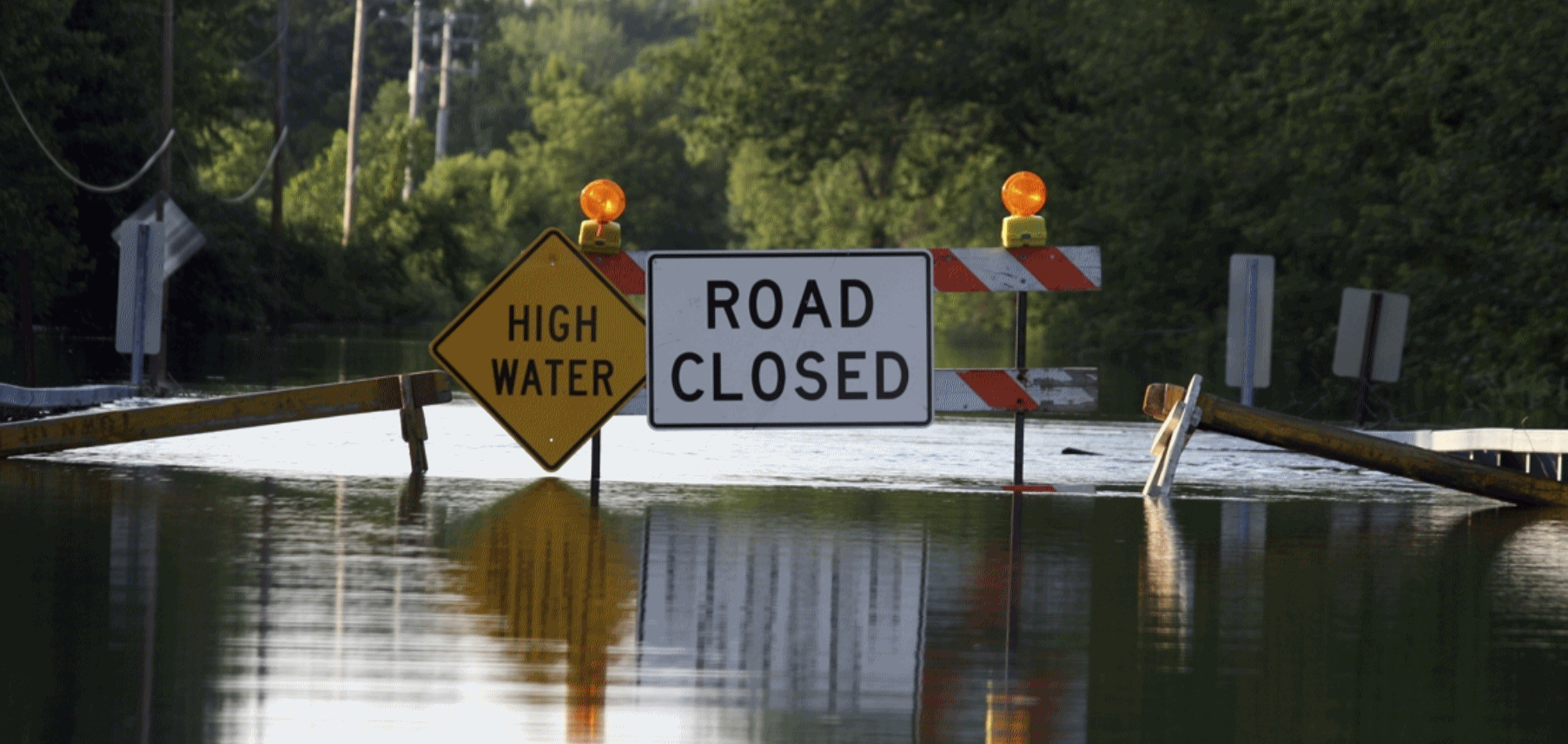 Deaths of 9 in Arizona Raise Questions About Flood Warnings
Deaths of 9 in Arizona Raise Questions About Flood Warnings.
Not to minimize this horrific event for the people involved, but
technology only goes so far. The warning system is good, but not
foolproof. If you're swimming in a creek, odds are you don't have your
cell phone on you, beeping, vibrating the latest warning. There's a
place for technology, paranoia and personal responsibility too. Here's
an excerpt from
US News: "...
The
storm dumped up to 1.5 inches (3.8 centimeters) of rain in an hour,
prompting a flash flood warning from the National Weather Service.
Though the service sent out a flash-flood warning over cellphone
networks, service in the remote area is patchy at best. Unless they had a
weather radio, the swimmers would have been unaware. Officials have
said people headed to wilderness areas should check weather alerts ahead
of time to determine whether it's safe. They note that it's hard to
predict where rain will fall in the desert Southwest, and people should
know that heavy downpours can cause flash flooding. That hasn't stopped
people from saying more should be done to protect the public from flash
floods. Steve Stevens, a volunteer firefighter with the nearby Water
Wheel Fire and Medical District, said there needs to be a way for
visitors to get flash flood alerts on their phones..."
At Midway Point: 2017 is Second Hottest Year on Record. Andrea Thompson reports at
Climate Central: "...
Personally,
I wasn't expecting it to be as warm as it has been,” Ahira
Sanchez-Lugo, a National Oceanic and Atmospheric Administration climate
scientist, said in an email. “After the decline of the strong El Niño I
was expecting the values to drop a bit and rank among the top five
warmest years. This year has been extremely remarkable.” The odds are
good that 2017 will stay in second place through the end of the year,
and it is even more likely that it will remain in at least the top three
hottest years. NOAA released its global temperature data
for June on Tuesday, and ranked June as the third warmest in its
records. The four-warmest Junes in its records have all happened in the
past four years..."
Graphic credit: NASA. "
How
monthly temperatures differ from the 1951-1980 average. So far, 2017
ranks behind only 2016 for the temperature for the first six months of
the year."
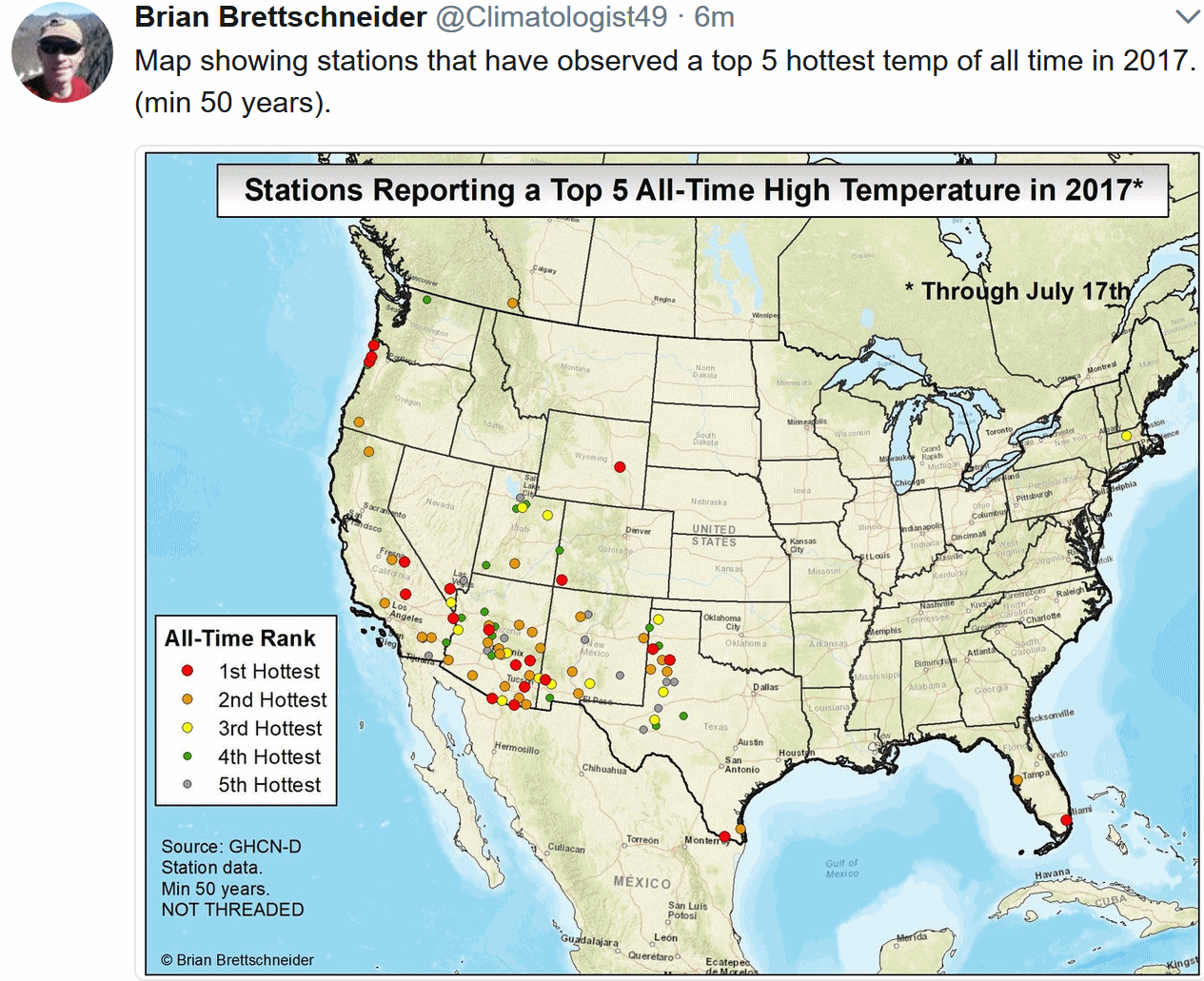
First Half of 2017: Fewer Weather-Related Losses Than 2016. Munich Re is tracking the trends. Here's an excerpt from
Intelligent Insurer: "...
Overall
losses came to $41 billion. The corresponding figure for the first six
months of 2016 was $111 billion; the average for the last ten years $102
billion. Insured losses totalled $19.5 billion (previous year: $32
billion; ten-year average $29 billion). The highest overall losses in
the first half-year were caused by the floods in Peru in February and
March with a figure of $3.1 billion, $380 million of which was insured.
The costliest event for insurers was a powerful thunderstorm in the US
in early May, with insured losses of $1.8 billion and overall losses of
$2.2 billion. The high number of severe thunderstorms in the USA is
presumed to have been at least partially influenced by a natural climate
phenomenon, according to Munich Re, especially in the first quarter of
2017: the tropical eastern Pacific off the northwest coast of South
America was exceptionally warm, a phenomenon that the Peruvian
authorities have dubbed “coastal El Niño”, despite the fact that it is
not a full-blown El Niño event..."
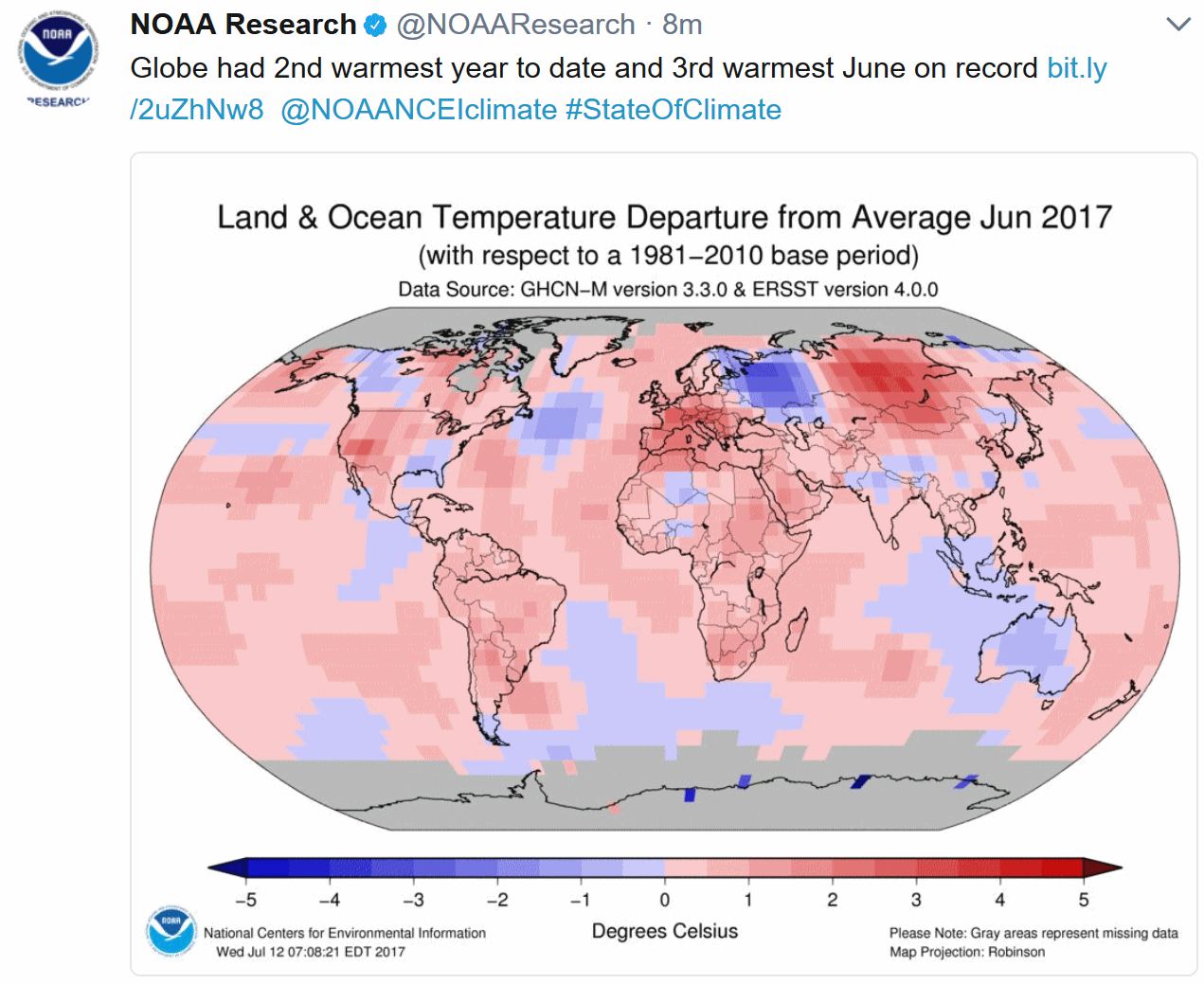
A Look Back at New England's Worst Hurricanes, in Photos. I found a post at
Boston.com to be quite fascinating: "
Though
hurricane season technically began June 1, the most dangerous storms to
hit New England’s coast have typically arrived in late summer. Gov.
Charlie Baker has officially devoted this week
to hurricane preparedness, urging Massachusetts residents to educate
themselves on how to prepare for a worst-case scenario weather event.
Here’s a look back, in photos, at some of the worst hurricanes in local
history. On Sept. 21, 1938, a record-breaking hurricane hit New England,
killing 564 people and injuring 1,700 more. The Blue Hill Observatory
in Milton recorded the strongest winds ever for the region, with gusts
up to 186 mph, according to the Massachusetts Office of Energy and Environmental Affairs..."
File photo credit: "
This
September 1938 photo shows a damaged ferry boat sitting in shallow
water in Providence, R.I., following the deadly hurricane of 1938 that
hit the Northeast."
Leslie Jones/AP Photo.
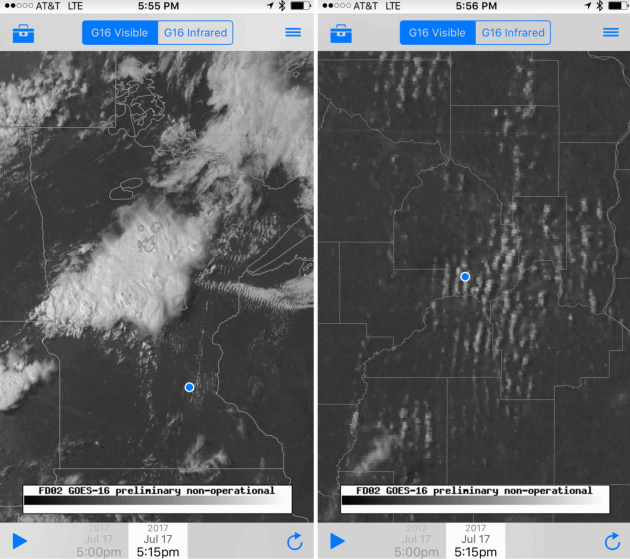
Amazing Resolution.
I took a couple of screenshots from Monday evening's thunderstorms, the
image on the right zoomed into the Twin Cities, showing individual
(cumulus) cloud streets at a resolution I've never seen before. This is
using the SSEC - GOES weather app. Good stuff.
NMT Research Leads to New Definition of Lightning. 7 seconds? Details via
dchieftain.com: "
New
Mexico Tech scientists have measured lightning strikes that have been
declared the longest duration and the longest distance ever recorded.
The new study is based on fundamental research and development by Tech
professors Ron Thomas, Bill Rison, and Paul Krehbiel. Over the past 20
years, they developed the Lightning Mapping Array, or LMA, which has
produced detailed records of lightning behavior. A new publication in
Bulletin of the American Meteorological Society details a lightning
discharge that travelled more than 200 miles in Oklahoma in 2007 and
another discharge that lasted 7.75 seconds in France in 2012. Rison was
credited as a co-author of the publication; all three NMT scientists
were cited multiple times..."
Photo credit: "
Lightning strikes inn Socorro County." Colleen Gino for El Defensor Chieftain.
In The Heart of Coal Country, State Officials Bet on Renewable Energy.
CNBC has the report: "...
When
Kiran Bhatraju, a native of Pikeville, Kentucky, and the CEO of
renewable-energy company Arcadia Power, heard that a coal company would
be converting an old strip mine into a solar farm, he expected huge
backlash. But his community's reaction was the opposite. "The mayor,
local politicians and people in coal country are ready and excited about
new jobs in the renewables industry," Bhatraju said. "The entire
community has been rallying behind the project because it will retrain
and put miners back to work..."
File photo:
Berkeley Energy Group.
Clean Energy Is Trouncing Oil, Gas and Coal in Trump Era. So says Bloomberg, which has metrics to back it up: "...As
clean-energy stocks climb, investors have pumped more money into wind
and solar. U.S. investments totaled $14.7 billion during April, May and
June, up 51 percent from the previous quarter to mark the highest level
since 2015, according to Bloomberg New Energy Finance. European
investments rose 10 percent, to $8.8 billion. “We are seeing catalysts
for these markets driven by the fact that people increasingly realize
clean energy is more profitable than conventional energy,” said David
Richardson, an executive director at Impax Asset Management, which
focuses on sustainability and has about $8.7 billion under management,
up 32 percent this year..."
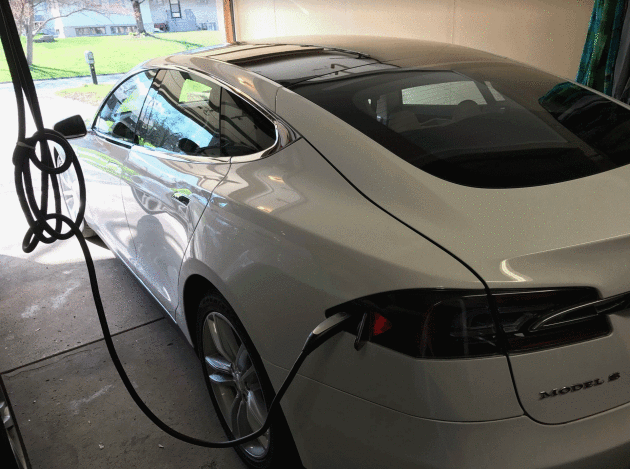
A Brighter Future for Electric Cars and the Planet. Here's an excerpt of an Op-Ed at
The New York Times: "...
the
skeptics, however, have consistently been overly pessimistic about this
technology. Electric cars face challenges, yet they have caught on much
faster than was though likely just a few years ago. There were 2
million of them on the world's roads last year, up 60 percent from 2015,
according to the International Energy Agency. The cost of batteries,
the single most expensive component of the cars, fell by more than half
between 2012 and 2016, according to the Department of Energy. Tesla has
indicated that it can produce batteries for about $125 per
kilowatt-hour. Researchers say the cost of electric cars will be at
parity with conventional vehicles when batter prices reach $100 per
kilowatt-hour, which experts say is just a few years away. Electric cars
are more efficient, of course, but they also require less maintenance,
which should make them cheaper to own over time..."
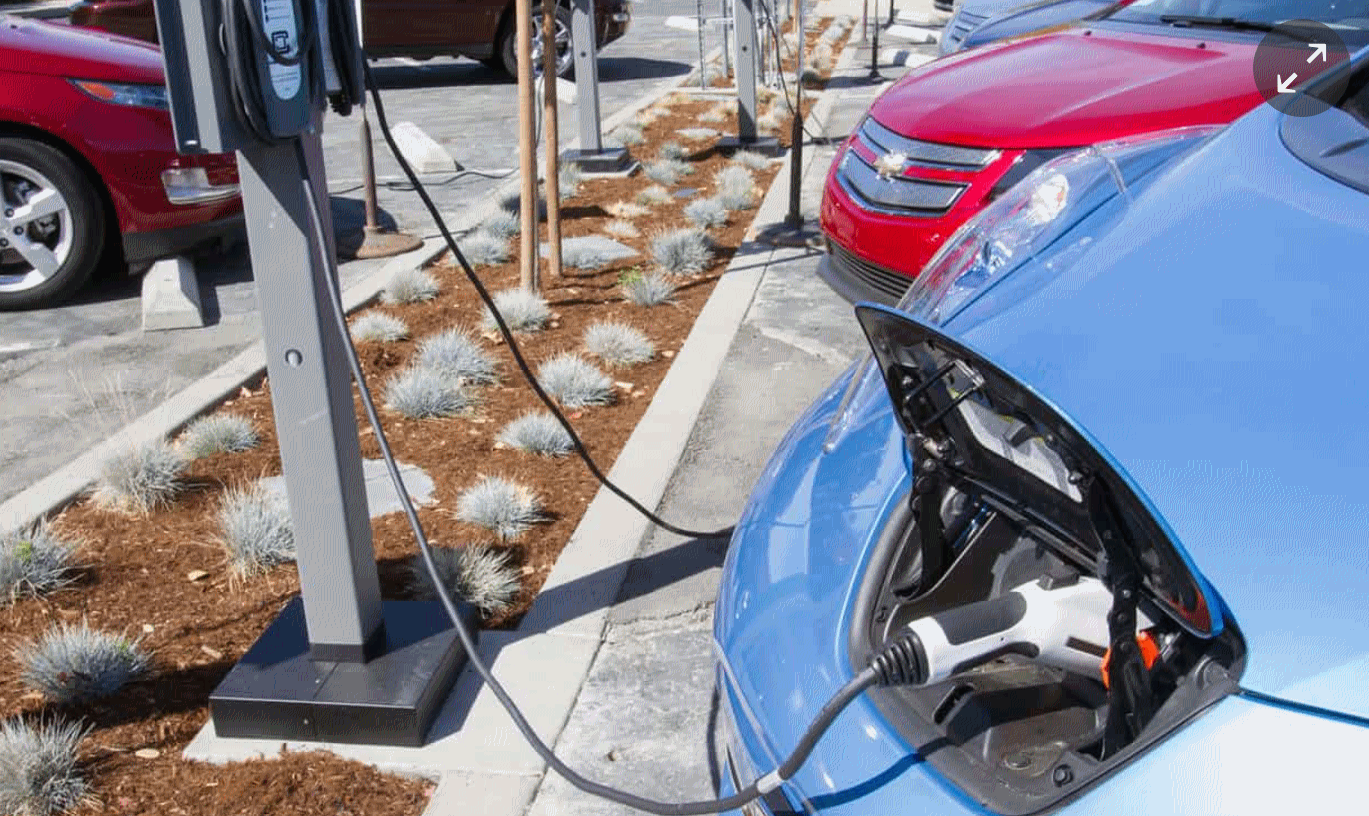
Electric Cars May Stall Without a Battery Revolution.
The Guardian Sustainable Business talks about the challenges ahead: "...
Costs
could come down drastically just with the scale of manufacturing,” says
Liu. Tesla alone wants to build three more Gigafactories around the
world, each one capable of churning out as many lithium ion batteries in
a year as the entire world did in 2013. The next step would be to
replace the graphite anodes in today’s batteries with electrodes made of
silicon. Silicon can store much more charge than graphite but expands
and shrinks when charging and discharging, and can react with and use up
the electrolyte. These problems cause experimental silicon anode
batteries to fail much sooner than those made with graphite. Solving
these issues could take five years, but should boost energy densities to
350 Watt hours per kilogram, thinks Liu. However, he admits lithium
batteries with enough energy density to double the range of cars are
still at least a decade away..."
Photo credit: "
Electric vehicles plugged into a charging station in a workplace car park." Photograph: Alamy
All The Times Elon Musk Has Trash-Talked Tesla's Stock Price as Overvalued.
Quartz has the story: "
Tesla
delivered just 76,230 cars last year, remains mired in debt, and
profitability is a distant speck on the horizon. Yet Ford, which earned
22-times more revenue, billions in profits, and manufactured 6.6 million
cars in 2016, is worth far less as valued by investors.
Tesla CEO Elon Musk keeps telling investors Tesla’s stock price is
wildly overpriced based on today’s performance despite his faith in its
future. Investors keep ignoring him. Tesla is now one of the world’s most valuable carmakers.
In terms of market cap, it has eclipsed Peugeot (April 2012), Fiat
Chrysler (May 2013), Suzuki (June 2013), Renault (Feb. 2014), Hyundai
(June 2015), Nissan (Feb. 2017), Ford (April 2017), and briefly
outranked even General Motors, although it has since fallen back to second place among US carmakers. Since listing in 2010, Tesla’s stock is up more than 1,000%..."
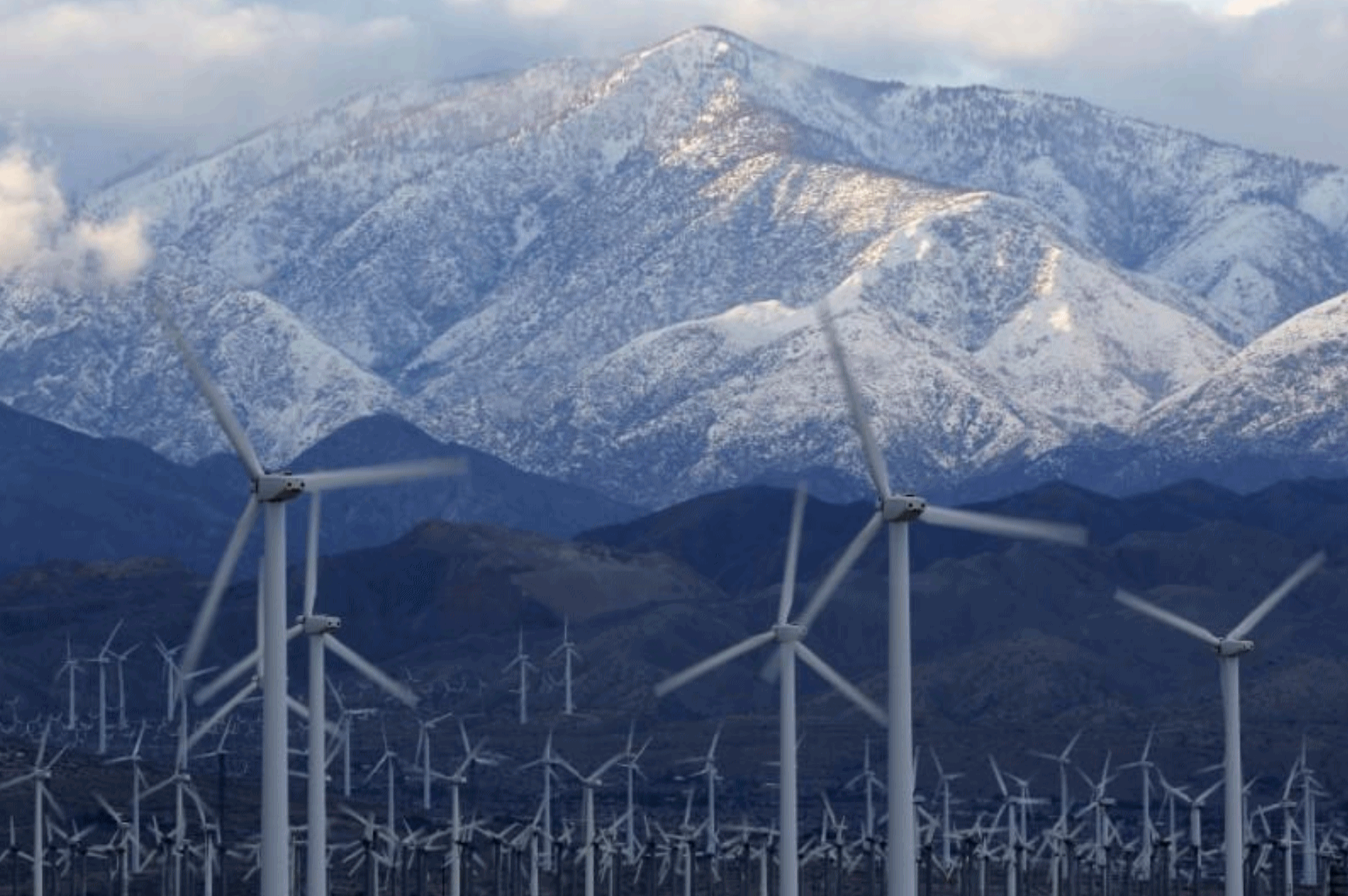
Wind, Solar Do Not Harm Power Grid Reliability: Draft U.S. Study. Reuters has the story: "
The
growth of renewable power, including wind and solar, has not harmed the
reliability of the U.S. electricity grid, according to a draft U.S.
Department of Energy study, echoing the findings of grid operators
across the country. The conclusion of the draft, dated July and viewed
by Reuters, could ease fears in the renewable energy industry that the
widely anticipated study would be used by President Donald Trump's
administration to form policies supporting coal plants at the expense of
wind and solar. "Numerous technical studies for most regions of the
nation indicate that significantly higher levels of renewable energy can
be integrated without any compromise of system reliability," the draft
says..."
Photo credit: "Snow is seen on the San Gorgonio Mountains behind a windmill farm in Palm Springs, California, January 7, 2016." Sam Mircovich.
Why the Grim Reaper of Retail Hasn't Come to Claim Best Buy. A story at The Los Angeles Times caught my eye; here's an excerpt: "...His
first move was to match any rival’s prices, especially those at Amazon,
so that in-store shoppers no longer needed to buy elsewhere. “We had no
choice, we had to take price off the table and match online prices,”
Joly said. That appeals to customers such as Scott Vellman of Los
Angeles, who bought the “Battlefield 1” video game for his Xbox One
player at Best Buy’s store in Atwater Village last week after Best Buy
matched its $50 price on Amazon. “I bought it here [instead of online]
because I didn’t want to wait for it to ship,” Vellman said. Best Buy
next sped up its delivery times, in part by expanding its national
distribution centers, and beefed up its website and phone app so that
customers could order online and pick up their products at the stores or
have them delivered..."
Interrupted Sleep May Lead to Alzheimer's, New Studies Show. The Washington Post has the details: "Getting
a solid night’s sleep is crucial not only for feeling good the next day
— there is increasing evidence that it may also protect against
dementia, according to new research presented Tuesday at the Alzheimer’s
Association International Conference in London. Three studies by
researchers at Wheaton College found significant connections between
breathing disorders that interrupt sleep and the accumulation of
biomarkers for Alzheimer’s disease. Treating the problems with dental
appliances or CPAP machines that force air into airways could help lower
the risk of dementia or slow its progress, the researchers said..."
File photo:
Finding Mastery.
And Now, A Weather Report from Mars. Turns out there are some similarities to weather on Earth, according to
Atlas Obscura: "...
Pla-García
works at the Spanish National Center of Astrobiology, which is
associated with NASA. Now, along with other two researchers, he has
decided to publish a periodical weather report in layman terms.
The other two weathermen are Antonio Molina, who inputs geological
data, and Javier Gomez Elvira, who processes the data for mainstream
consumption. To make the weather report more appealing to the general
public, the team has made a point of including comparisons with Earthly
weathehr phenomena. In their first report, released on March 15, they
compared the Gale Crater winds with the Chinook air streams in the Rocky
Mountas of North America. Their second report, released on July 11,
discusses the strong whirlwinds known as Dust Devils..."
Image credit: "
A towering dust devil in the late-spring afternoon, Amazonis Planitia region of northern Mars."
ASA/JPL-Caltech/Univ. of Arizona
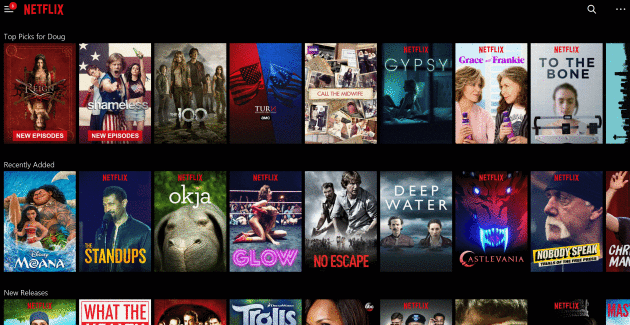
Netflix Takes on Hollywood. Will people still be going to movie theaters in 5 years? I hope so, but some days I'm not so sure. Here's an excerpt from
The Washington Post: "...
There
is a war in Hollywood right now and the war is the Netflix model versus
the Hollywood model," said Ross Gerber, president and chief executive
of Gerber Kawasaki, a wealth and investment management firm based in
Santa Monica. Over the past decade movie attendance has trended
downward, just as ticket prices have steadily increased, according to
data compiled by Box Office Mojo. And opening night for many movies
outside the blockbuster genre has lost some of its luster, analysts say.
"Nobody is going to the movies," Gerber said. "If it's not a tent-pole
movie, people don’t care anymore." Gerber envisions a new model where
Netflix customers are granted access to newly released movies, perhaps
for a onetime $40 fee, or as part of a monthly premium subscription..."
Robots Will Make The Best Fake News. Here's something to look forward to, courtesy of
Bloomberg View: "...
Human
beings can doctor images such as photographs, but it’s laborious and
difficult. And faking voices and video is beyond our capability. But
soon, thanks to machine learning, it will probably be possible to easily
and quickly create realistic forgeries of someone’s face and make it seem as if they are speaking in their own voice. Already, lip-synching
technology can literally put words in a person’s mouth. This is just
the tip of the iceberg -- soon, 12-year-olds in their bedrooms will be
able to create photorealistic, perfect-sounding fakes of politicians,
business leaders, relatives and friends saying anything imaginable. This
lends itself to some pretty obvious abuses. Political hoaxes --
so-called “fake news” -- will spread like wildfire. The hoaxes will be
discovered in short order -- no digital technology is so good that other
digital technology can’t detect the phony -- but not before it puts
poisonous ideas into the minds of people primed to believe them. Imagine
perfect-looking fake video of presidential candidates spouting racial
slurs, or admitting to criminal acts..."
This Rare Medical Condition Makes You Love Everyone. A story at
National Geographic made me do a double-take: "
A child that can’t stop hugging people, has no fear of strangers, and loves everyone equally—sounds beautiful, right? Not always. People with Williams syndrome,
a rare genetic condition, face problems every bit as challenging as
those with autism, from learning difficulties to trouble forming
friendships. As Jennifer Latson reveals in her moving book, The Boy Who Loved Too Much: A True Story Of Pathological Friendliness, it can also be immensely difficult for parents. The syndrome, whose sufferers have a surfeit of oxytocin, aka the love hormone, affects roughly 1 in 10,000 people worldwide, with 30,000 in the U.S..."
Photo credit: "Raising children with Williams syndrome can pose some unique challenges, such as setting boundaries with strangers." Photo by Joel Sartore, National Geographihc Creative.
Clothes That Grow With Kids? Here's a novel idea, reduce waste and built-in obsolescence.
If we can make expandable-waist pants that grow as I grow (outward)
I'll really start paying attention. Details via Holy Kaw! "If
you’ve ever been to a baby shower, you’ve seen piles of adorable
clothes, many of which will never leave the drawer until it’s time for a
Goodwill run. Royal College of Art graduate Ryan Mario Yasin began Petit
Pli to stop the waste with a uniquely designed clothing line that’s
comfy and grows with kids, so parents aren’t heading to the store every
few months in search of a whole new wardrobe..."
The Ultimate Playlist of Banned Wedding Songs. For inquiring minds, here's a clip from
FiveThirtyEight: "...
There’s no single rule book on weddings, just a vaguely worded social contract we’re chipping away at, from how much to spend on gifts to who pays for the shindig. Last year, we asked readers to send in the songs they chose for their receptions, and thus we were able to establish the ultimate wedding playlist.
But every light casts a shadow, and the interest in sending over the
must-plays was met with even more fervor for the must-not-plays. We
collected the testimonies of more than two dozen professional DJs on
nearly 200 weddings to find out what the most commonly prohibited songs
and artists are. Here are the songs that couples most frequently ban
from wedding receptions..."
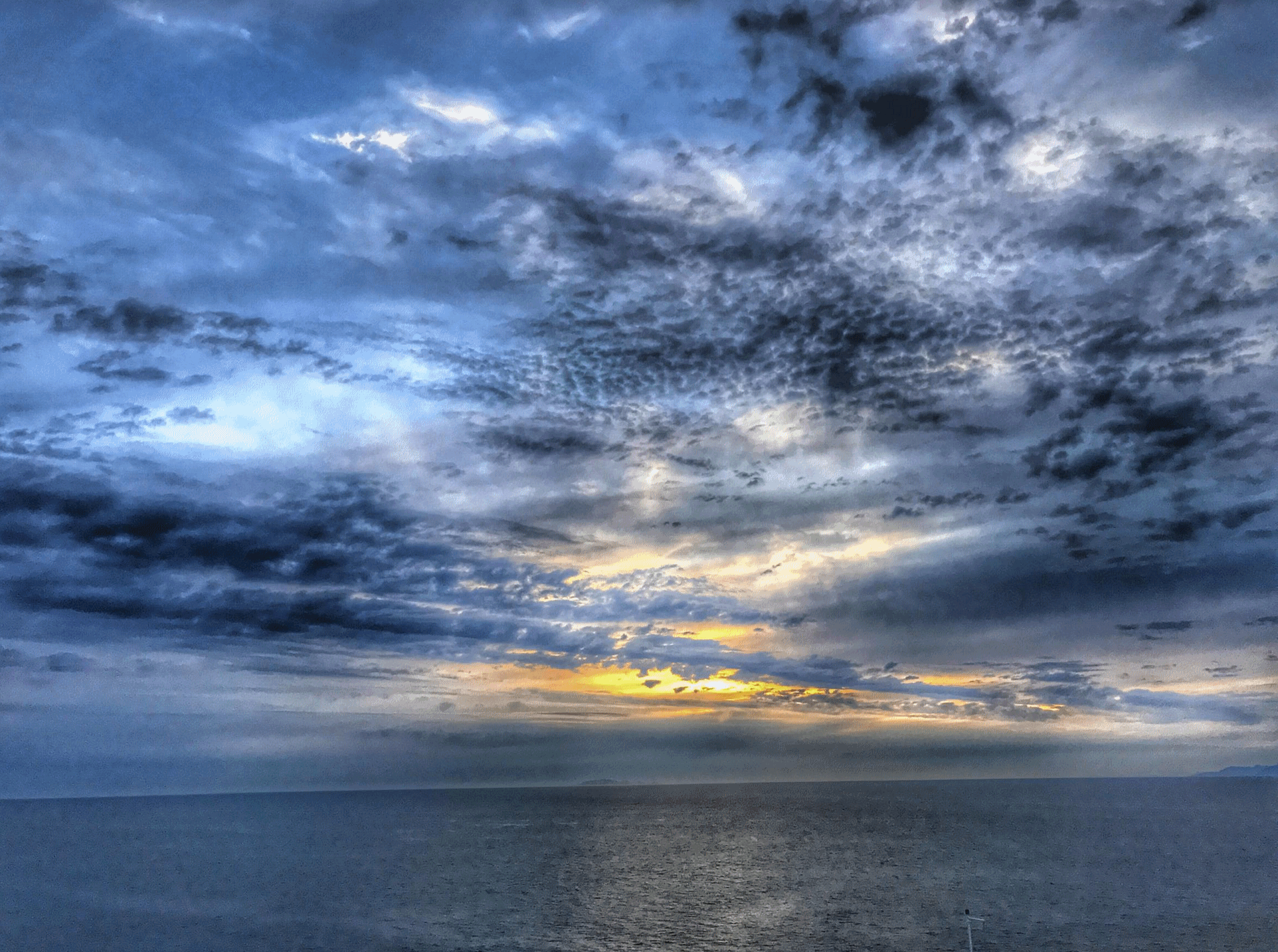
TODAY: Flood Watch early as storms taper. Clearing skies, drying out. Winds: NE 5-10. High: 88
THURSDAY NIGHT: Clouds increase. Low: 71
FRIDAY: Unsettled, few T-storms nearby. Winds: SE 7-12. High: 82
SATURDAY: Partly sunny, late-day T-storm? Winds: W 8-13. Wake-up: 69. High: 88
SUNDAY: Mix of clouds and sun, less humid. Winds: N 7-12. Wake-up: 66. High: 77
MONDAY: More sun, very pleasant. Winds: SE 7-12. Wake-up: 57. High: near 80
TUESDAY: Clouds increase, few T-storms. Winds: S 7-12. Wake-up: 62. High: 83
WEDNESDAY: More showers and T-storms possible. Winds: NW 8-13. Wake-up: 65. High: 82
Climate Stories...
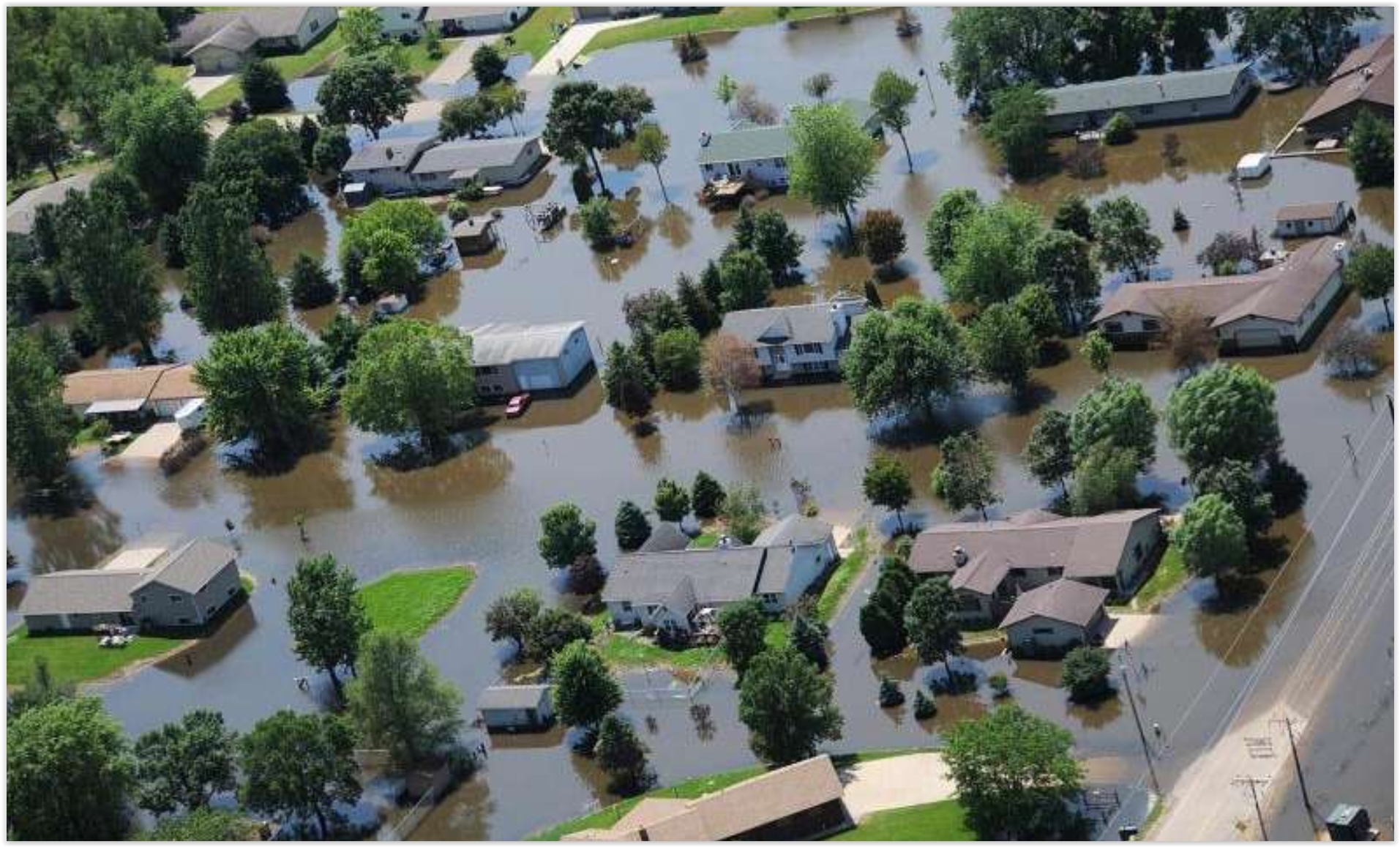 Climate Change Will Bring Coastal Flooding.
Climate Change Will Bring Coastal Flooding. Here's a snippet of an Op-Ed from the Editorial Board at
San Antonio's Express-News: "...
This
fits a broader prediction for America’s coasts from the Union of
Concerned Scientists. At present, about 90 communities across America
face such chronic flooding. But that will nearly double to 170
communities by 2035 under moderate projections for sea level rise. By
2060, it will jump to 270 coastal communities. And by 2100, nearly 500
coastal communities. A more extreme projection says 670 coastal
communities will face chronic flooding by the end of the century. These
projections can be useful for planning purposes. How close to the coast
should communities build hospitals, refineries, schools? What land can
communities set aside to ease flooding? What actions should be taken to
reduce carbon emissions and mitigate warming to limit the toll a warmer
world will take on future generations? Like other reports on climate
change, this coastal flooding report warns of an outsized impact on the
poor as well as the business and security concerns that come with a
warming world..."
File photo: Walt Jennings, FEMA.
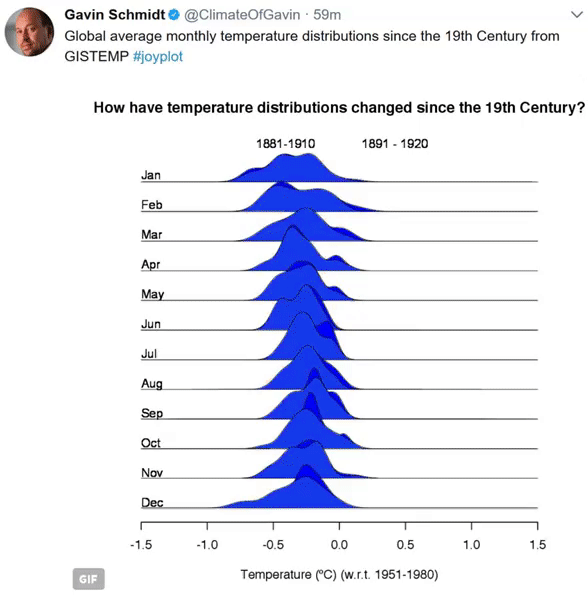
Threat of Lyme Disease Spreads North. Another unwelcome symptom of a warming climate. Here's an excerpt of an interview at
Yale Climate Connections: "...
The
problem is not just in Maine. Annual reported cases of Lyme disease in
the U.S. have more than doubled over the past 20 years. Foley says part
of the reason is that warmer winter temperatures have allowed the ticks
to thrive in new areas, so more cases are now reported in places like
upstate New York, and the upper Great Lakes region.
Foley: “The expansion north is certainly associated with climate change.”
And
it’s not just rising temperatures. Changes in precipitation, humidity,
and vegetation can also affect tick populations and the transmission of
Lyme disease..."
Global Warming Melts Ice, Alters Fabled Northwest Passage. Here's a clip from AP and
The Washington Post: "
More
than a century has passed since the first successful transit of the
treacherous, ice-bound Northwest Passage by Norwegian explorer Roald
Amundsen in 1906. Now The Associated Press is sending a text, video and
photo team through the passage, where global warming is melting sea ice
and glaciers at an historic rate, altering and opening up the Arctic in a
way unprecedented in recorded history. Although the passage presents an
attractive shortcut for maritime traffic between the Pacific and
Atlantic oceans, only a dozen or two vessels attempt to navigate the
poorly charted Canadian Arctic Archipelago during the brief summer
window each year. Many are sturdy coast guard icebreakers, adventure
cruises and thrill-seekers in small, nimble boats hoping to pick their
way through fields of floating ice that can easily strand unprepared
mariners..."
Photo credit: "
Polar
maritime lawyer Scott Joblin, from the Australian National University
in Cambria, looks over a map aboard the Finnish icebreaker MSV Nordica
as it sets sail in the North Pacific Ocean toward the Bering Strait,
Thursday, July 6, 2017. A group of international researchers is sailing
into the Arctic Sea aboard the Finnish icebreaker to traverse the
Northwest Passage and record the environmental and social changes that
are taking place in one of the most forbidding corners of the world." (David Goldman/Associated Press).
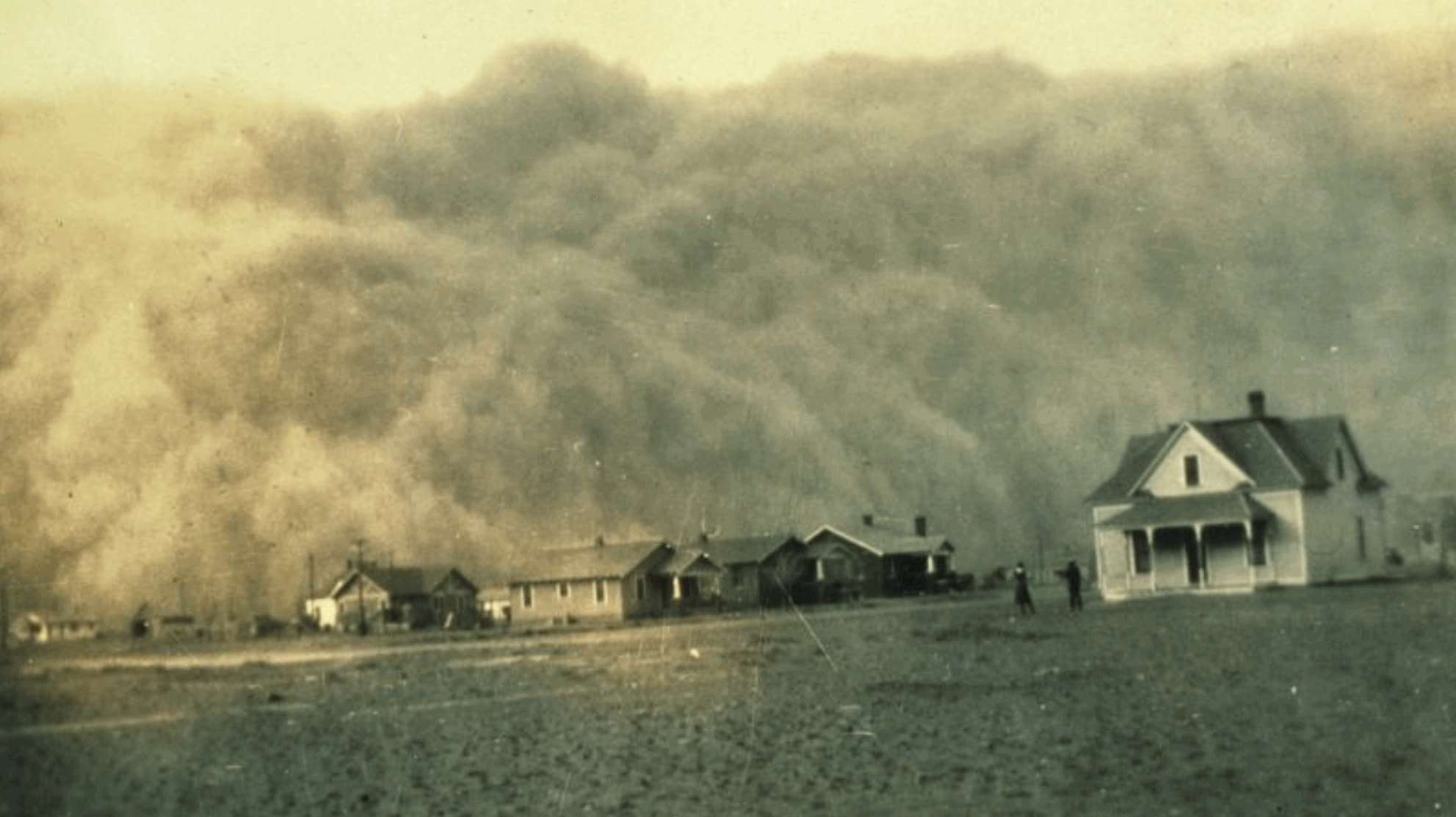 Scientists Warn Climate Change Could Bring the Dust Bowl Back Out of the History Books.
Of course land use techniques and farming practices have improved
dramatically since those dark, dusty days back in the 1930s. Could it
happen again? Gizmodo has details on a new study: "...In a study published on July 17 in the journal Scientific Reports,
researchers at Princeton University and the National Oceanic and
Atmospheric Administration’s Geophysical Fluid Dynamics Laboratory used
satellite data from 2003-2015 to resolve some of the lingering
uncertainty on prior dust activity models. Their research projects that
“climate change will increase dust activity in the southern Great Plains
from spring to fall in the late half of the twenty-first century –
largely due to reduced precipitation, enhanced land surface bareness,
and increased surface wind speed.” In other words, deforestation and the
mega-droughts which are increasingly becoming a feature of our changing climate are likely to create conditions ideal for the return of massive dust storms.
Scientists Warn Climate Change Could Bring the Dust Bowl Back Out of the History Books.
Of course land use techniques and farming practices have improved
dramatically since those dark, dusty days back in the 1930s. Could it
happen again? Gizmodo has details on a new study: "...In a study published on July 17 in the journal Scientific Reports,
researchers at Princeton University and the National Oceanic and
Atmospheric Administration’s Geophysical Fluid Dynamics Laboratory used
satellite data from 2003-2015 to resolve some of the lingering
uncertainty on prior dust activity models. Their research projects that
“climate change will increase dust activity in the southern Great Plains
from spring to fall in the late half of the twenty-first century –
largely due to reduced precipitation, enhanced land surface bareness,
and increased surface wind speed.” In other words, deforestation and the
mega-droughts which are increasingly becoming a feature of our changing climate are likely to create conditions ideal for the return of massive dust storms..."
File photo: "
A dust storm in April 1935 about to give Stratford, Texas a very bad day." Photo Courtesy
NOAA
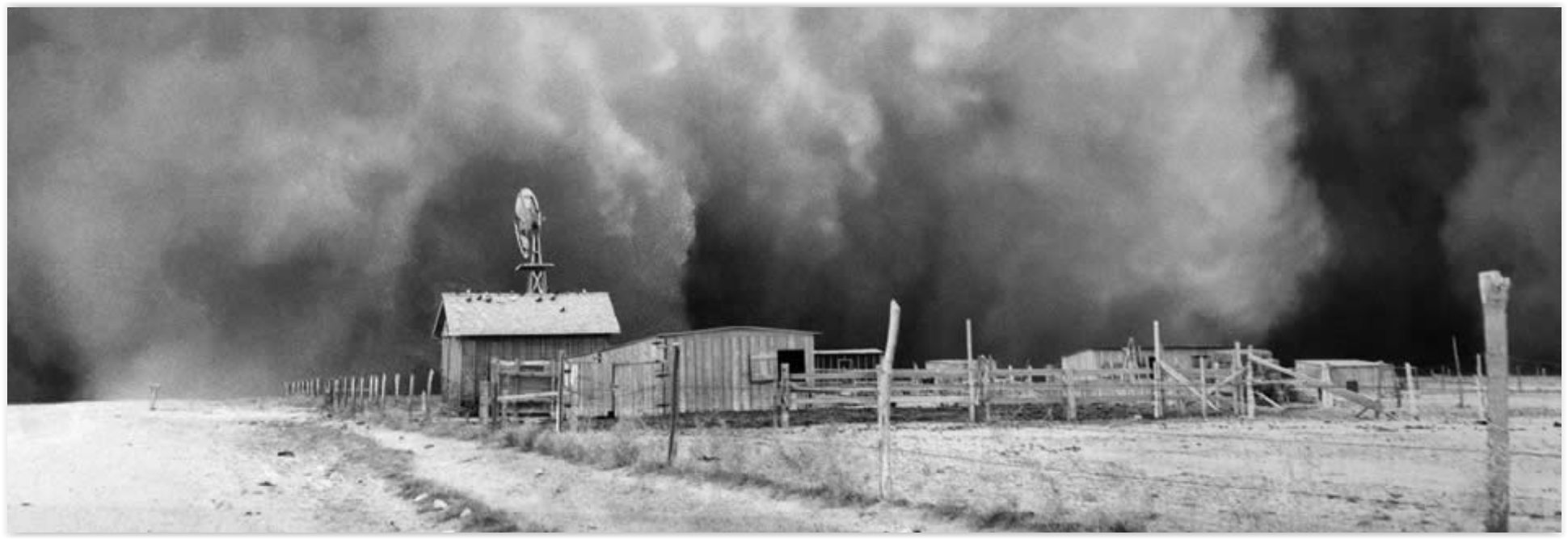 Great Plains to See More Dust Storms in Second Half of the 21st Century
Great Plains to See More Dust Storms in Second Half of the 21st Century.
UPI has more perspective on the study referenced above: "
Climate
change will bring more dust storms to the Great Plains in the latter
half of the 21st century, according to the latest prediction models.
According to new models developed by climate scientists at Princeton
University and the National Oceanic and Atmospheric Administration,
already dry and dusty regions, like southwestern deserts and the central
plains, will become drier and dustier in the second half of the 21st
century. The increase in dry, dusty conditions in the southern parts of
the Great Plains is expected to encourage an increase in the prevalence
of dust storms. Global warming is expected to bring warmer temperatures
to most of the globe, but the impacts of rising greenhouse gas
concentrations on precipitation is more nuanced and geographically
dependent. Some places are likely to experience more rain, while other
places will get drier..."
File image: PBS.
Marin County, California Sues Energy Companies Over Climate Risks. The
legal profession is going to log a nearly infinite number of billable
hours over climate change. This will make litigation over tobacco risks
look like small potatoes. Here's an excerpt from
marinij.com: "
Marin
County sued 37 oil, gas and coal companies Monday asserting the
companies knew their fossil fuel products would cause sea level rise and
coastal flooding but failed to reduce their greenhouse gas pollution.
The lawsuit was part of a coordinated litigation attack by Marin, San
Mateo County and the city of Imperial Beach. The Marin lawsuit, filed in
Marin County Superior Court, alleges that “major corporate members of
the fossil fuel industry, have known for nearly a half century that
unrestricted production and use of their fossil fuel products create
greenhouse gas pollution that warms the planet and changes our climate.”
The suit goes on to say that even though the fossil fuel companies knew
there was a narrow window to take action before consequences would be
irreversible, they engaged in a “coordinated, multi-front effort” to
“discredit the growing body of publicly available scientific evidence
and persistently create doubt...”
Photo credit: "
A display installed along the shore of Richardson Bay in Mill Valley shows sea level projections." (Alan Dep/Marin Independent Journal).
"As the Glacier Receded, It Gave Up Their Bodies". Yet another symptom of a warming planet. Here's an excerpt from
MSN.com: "...
The
regional police force told local media the bodies were discovered last
week, near a ski lift on the Tsanfleuron glacier, by a worker for an
adventure resort company. "The bodies were lying near each other. It was
a man and a woman wearing clothing dating from the period of World War
Two," Glacier 3000 director Bernhard Tschannen told local media,
according to Reuters. "They were perfectly preserved in the glacier and
their belongings were intact." Tschannen told the Tribune de Geneve that
his staff believed the couple likely fell into a crevasse, "where they
stayed for decades. As the glacier receded, it gave up their bodies..."
Photo credit: Associated Press.
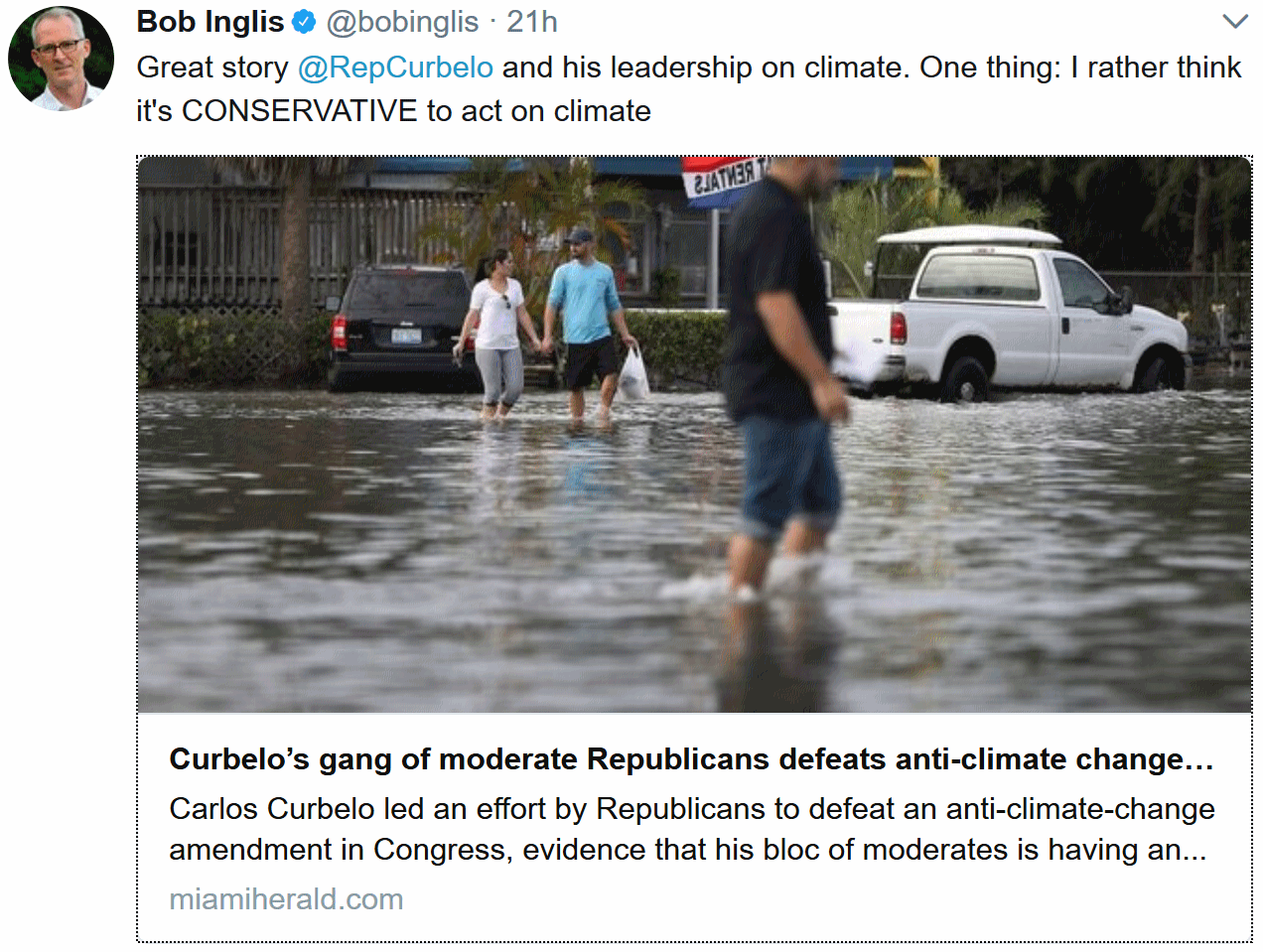 Curbelo's Gang of Moderate Republicans Defeats Anti-Climate Change Legislation
Curbelo's Gang of Moderate Republicans Defeats Anti-Climate Change Legislation.
Grandpa, what's a moderate Republican? Good for Rep. Curbelo - gives me
renewed hope for a sane, science-centric future. Here's a clip from
Miami Herald: "
Carlos
Curbelo touts himself as a rare Republican in Washington willing to
criticize Donald Trump and conservative members of his own party. And
after months of talk and lots of tweeting, Curbelo’s effort to build a
bloc of moderate Republicans capable of swaying anti-climate-change
legislation appears to have paid off. Curbelo’s Climate Solutions
Caucus, a group of 24 Republicans and 24 Democrats who are concerned
about the impacts of climate change, voted en masse on Thursday against a
proposal to nix a Defense Department report on
the threats posed by climate change to military installations. “A
bipartisan majority of Members are on the record saying climate change
and sea level rise must be taken into account when planning for our
national defense,” Curbelo said in a statement. “With military bases
like Naval Air Station Key West extremely vulnerable to sea level rise,
this vote was a huge win for our coastal military communities..."
In Landmark Move, GOP Congress Calls Climate Change "Direct Threat" to Security. It's a step in the right direction, although the US Navy has been saying this for years. Here's an excerpt from
Foreign Policy: "...
One study
last year found that rising oceans threaten 128 military installations
on the coasts, including naval facilities worth around $100 billion. The
Pentagon has been aware for years of the looming danger represented by
climate change. But partisan infighting in Congress, budget
sequestration, and the toxic nature of the climate debate have hamstrung
the Defense Dept. from taking steps to protect key assets — or even
identifying which facilities face the most serious threats.
This week, though, the Pentagon may have gotten a boost — from the
unlikeliest of places. The Republican-controlled House retained an amendment
to the 2018 defense funding bill affirming that “climate change is a
direct threat to the national security of the United States.” It orders
defense officials to draw up a report laying out which facilities would
be most affected..."
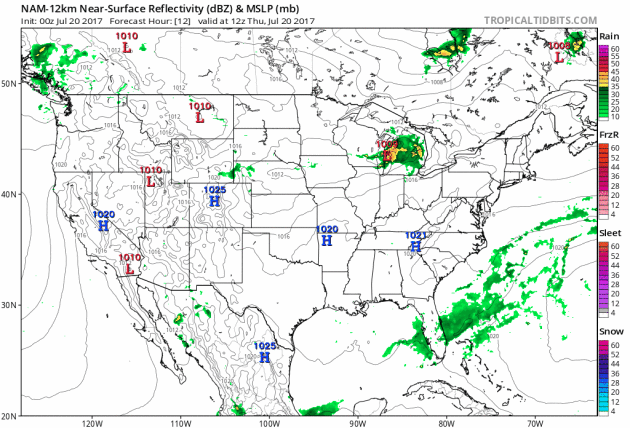
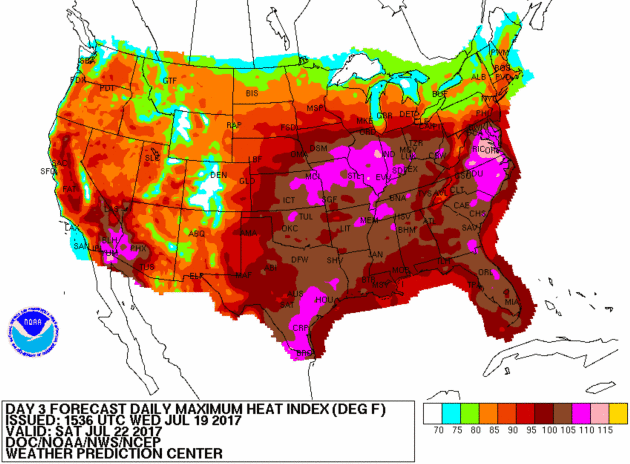
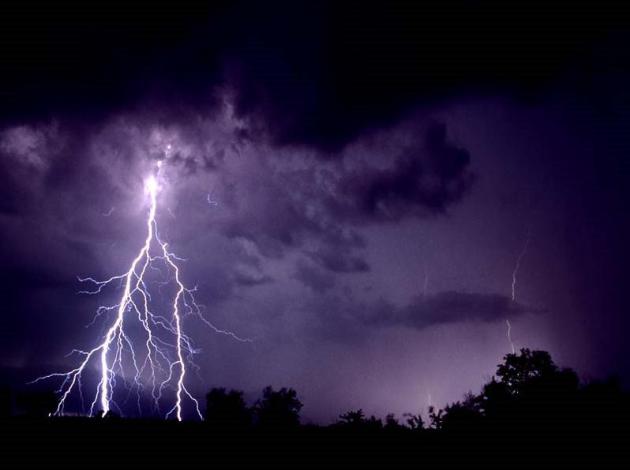
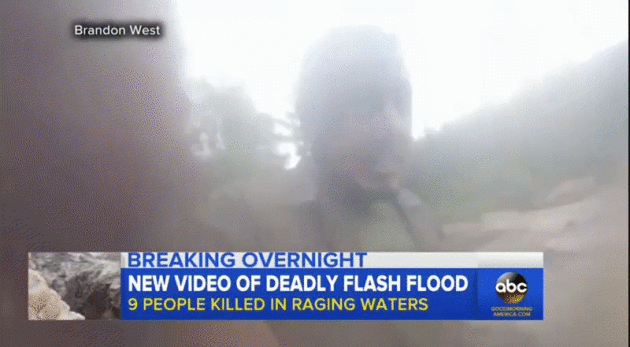
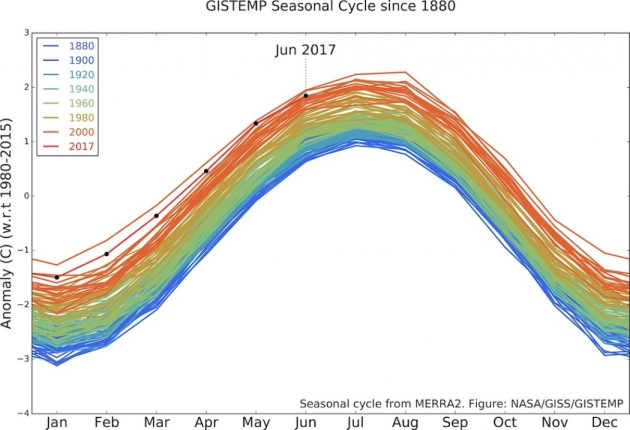



No comments:
Post a Comment